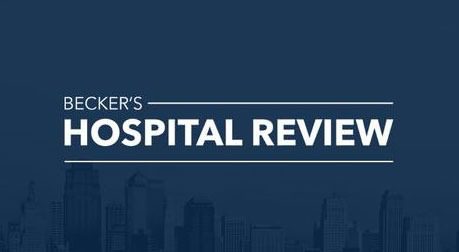
Medicare, Medicaid turns 60: What’s changing — and what it means for hospitals – Becker’s Hospital Review | Healthcare News
July 30, 2025, marks the 60th anniversary of Medicare and Medicaid, which have grown to cover about 140 million people combined, including older adults, people with disabilities and low-income families. Medicare insures more than 68 million people, while 71 million are enrolled in Medicaid.
That safety net is under pressure. Millions of Americans are projected to lose their health insurance in the coming years due to Medicaid cuts and ACA reforms outlined in The One Big Beautiful Bill Act, which President Donald Trump signed into law July 4. The Congressional Budget Office estimates the legislation will increase the number of uninsured Americans by 10 million by 2034.
“Before Medicare and Medicaid, tens of millions of Americans lived in fear of illness. Sixty years ago today, that all changed with the presidential signature on a new law that brought peace of mind and a new era of access to medical care,” Chip Kahn, president and CEO of the Federation of American Hospitals, said in a July 30 statement shared with Becker’s. “In the decades since, our nation has proudly built on the promise of care for our most vulnerable, but today that promise is under threat.”
Cuts to Medicaid, the expiration of the ACA’s enhanced premium tax credits at the end of 2025, and threats of Medicare reductions are placing millions of Americans’ coverage and access to care at risk
“As we celebrate the anniversary of Medicare and Medicaid, we need a reaffirmation of that promise to ensure the most vulnerable across our country will continue to get the care they expect and deserve,” Mr. Khan said.
Here are nine things hospital and health system leaders should know about Medicare and Medicaid in 2025:
1. Coverage has expanded to nearly half the U.S. population. Medicare, Medicaid and the Children’s Health Insurance Program now insure more than 152 million Americans, highlighting their foundational role in the country’s healthcare landscape. That coverage is increasingly vulnerable and likely to take a steep hit amid impending funding cuts.
2. Medicare Advantage growth slows. More than half of Medicare beneficiaries (34 million people) are enrolled in MA plans, shifting the landscape from traditional fee-for-service to managed care models that emphasize cost control and quality metrics. The percentage of eligible Medicare beneficiaries enrolled in MA plans grew to 54% in 2025, but the pace of the increase in enrollment has slowed this year , according to a July 28 report from KFF.
3. Reimbursement shortfalls strain hospital finances. On average, Medicare reimburses hospitals at 84% of their costs, with Medicaid covering even less, according to an April 2025 report published by the American Hospital Association. These gaps create persistent financial challenges, particularly for rural and safety-net providers.
4. CMS targets Medicaid provider tax “loophole.” CMS plans to close a Medicaid tax “loophole” that it alleges some states exploited to increase federal payments while minimizing their state financial contributions. The agency argues that certain states targeted specific entities with taxes that draw down higher federal matches — in some cases up to 77% for traditional Medicaid populations — and then redirected those federal dollars back to the taxed entities. The proposed rule is particularly aimed at curbing alleged tax schemes employed by California, Michigan, Massachusetts and New York, which are responsible for 95% of the projected federal losses under the loophole, according to CMS.
CMS’ proposed rule would:
- Ban states from taxing Medicaid business at higher rates than non-Medicaid business;
- Prevent the use of ambiguous language to obscure Medicaid-specific taxes;
- Introduce additional safeguards to deter system manipulation; and
- Implement a phased transition timeline based on the duration of existing waivers.
5. ACA subsidies face a cliff. The ACA’s enhanced premium tax credits — critical in reducing the uninsured rate during the pandemic — are set to expire at the end of 2025. If they lapse, the AHA estimates that 4.2 million people could lose coverage by 2034. This would increase uncompensated care and bad debt, further straining hospital finances and threatening access to care — particularly those in rural and underserved areas. KNG Health Consulting projects hospitals would see a $28 billion drop in spending over 10 years. The enhanced tax credits, initially set for 2021 and 2022, were extended through 2025 under the Inflation Reduction Act. Since their rollout, ACA marketplace enrollment has more than doubled — from 11.4 million in 2020 to 24.3 million in 2025, according to KFF.
6. The ACA open enrollment window will tighten. CMS has finalized a rule that will shorten the open enrollment period on the ACA exchange and create stricter eligibility verifications for enrollees. The agency expects the changes to lower individual premiums by about 5% and save $12 billion in 2026 by reducing improper enrollments. CMS estimates up to 5 million people may have enrolled without proper verification, aided by loosened rules and expanded subsidies. “CMS is restoring integrity to ACA Exchanges by cracking down on fraud, protecting taxpayer dollars, and ensuring coverage is there for those who truly need it,” CMS Administrator Mehmet Oz, MD, said in a June 20 news release. “This is about putting patients first, stopping exploitation of the system, and realigning the program with the values of personal responsibility and fiscal discipline.”
7. Medicare payment rates see meagre increases. CMS has pitched several Medicare payment updates for 2026, including a 2.4% increase in inpatient hospital payments and a 2.4% outpatient pay bump for hospitals. The small pay bumps follow the trend of previous years; the AHA argues that the pay increases are “inadequate” when accounting for inflation, the rising cost of care and the ubiquitous financial challenges hospitals are facing, particularly those operating in rural and underserved communities.
8. Expanding site-neutral payments and eliminating the Medicare inpatient-only list. CMS aims to expand site-neutral payment policies, making set rates for certain services no matter what setting they are performed in. The agency is initially targeting drug administration services, but has signaled that they will look to expand this approach to high-volume and high-cost services such as spine surgery. CMS also plans to phase out the inpatient-only list over the next three years, beginning with removing 285 mostly musculoskeletal procedures from the list in 2026. The proposal would allow for these services to be paid by Medicare in the hospital outpatient setting when determined to be clinically appropriate, giving physicians greater flexibility in determining the most appropriate site of service, according to the agency.
The AHA strongly opposed both proposals, arguing that they fail to account for “the real and crucial differences” between hospital outpatient departments and other care sites. “Studies show hospital outpatient departments are more likely to serve Medicare patients who are sicker, more clinically complex, and more likely to be disabled or living in poorer, rural communities than patients treated in independent physician offices,” The AHA said in a July 15 statement shared with Becker’s.
9. CMS to accelerate 340B hospital clawback plan. In the 340B final remedy rule, CMS finalized a change to the OPPS conversion factor for non-drug items and services starting in 2026. Initially, a 0.5% pay cut was set to remain in place until recouping $7.8 billion in overpayments made between 2018 and 2022 — a process estimated to extend through 2041. However, CMS now plans to increase the pay cut to 2% in 2026, shortening the repayment timeline to 2031.
The AHA voiced its concern about the proposal and argued that the accelerated clawback punishes 340B hospitals for the CMS’s own mistake in implementing a policy that a unanimous Supreme Court held to be unlawful. “Doubling down on that unlawfulness, the proposed recoupment is both illegal and unwise, and it should not be finalized,” Ashley Thompson, senior vice president of public policy analysis and development at the AHA, said in a July 15 statement.



